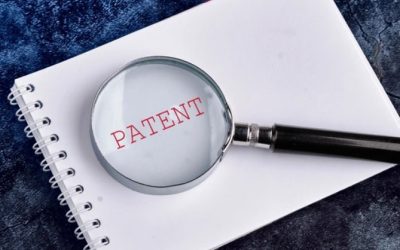Indian patent law has shown increased interest in “auxiliary claims” throughout the last few years. Auxiliary claims provide an additional protection layer for applicants when their original claims fail to pass examination. Although the term “auxiliary claims” is not explicitly defined in the Indian Patents Act, their usage has become more common, particularly after the abolition of the Intellectual Property Appellate Board (IPAB) in 2022.
The adoption of auxiliary claims in India stems from the constantly growing complexity during patent prosecution and legal interpretation. The European Patent Office (EPO) operates with a systematic and documented procedure for managing auxiliary requests whereas India lacks such a structured approach. Applicants at the European Patent Office must organize multiple claim sets into a hierarchical system to fulfill requirements for patentability. This article first examines the clinical standards for auxiliary requests at the EPO, then explores the rise of auxiliary claims in India following the IPAB’s abolition. It also critically evaluates whether Section 59(1) of the Patents Act, 1970, justifies these claims or if an alternative legal framework is needed.
- The Clinical Standards for Auxiliary Requests at the EPO
Patent applications handled by the European Patent Office (EPO) require structured processing of auxiliary requests throughout the patent prosecution period. The procedure allows applicants to file a main request along with one or more auxiliary requests, serving as fallback positions if the primary claim set is found unallowable. This practice is governed by the EPO Guidelines for Examination (2024), particularly in Chapter III, Section 3.3, which deals with examination proceedings.
Legal Framework and Key Requirements under the European system:
- Hierarchy of Claims: When filing patent applications an applicant presents their primary claim set as the main request which includes additional auxiliary requests that establish a descending priority arrangement.
- Examination by the EPO: If the main request is rejected, examiners evaluate the next auxiliary request in line.
- Compliance with Article 123(2) EPC: Any auxiliary request must not introduce subject matter beyond what was originally disclosed in the patent application.
- Concise Reasoning for Rejections: Rule 71(3) EPC requires examiners to provide clear reasons for rejecting higher-ranking claim sets and to indicate which auxiliary request may be allowable.


Since the introduction of European patent law auxillary claims have always been considered valid. Auxiliary claims received validation from the Enlarged Board of Appeal of the EPO when they reviewed several cases. As per T 937/09 (Molecular Markers/UNILEVER) the boards accepted that auxiliaries requests serve applicants by allowing systematic claims modifications which preserve procedural efficiency. T 409/10 (Application of Amended Claims) sees the EPO Board stating that auxiliary claims must obey Article 123(2) and (3) EPC regulations yet they permit decent adaptations to handle patent office refusals.
T 1695/07 (Secondary Amendments) through its judiciary position confirmed that auxiliary claims function as an essential instrument for applicants to maintain patent protection during primary claim invalidations. The decisions demonstrate how European patent law incorporates auxiliary claims as a vital component during patent prosecution and appeal proceedings for offering direction to upcoming Indian patent law development in this area.
The Emergence of Auxiliary Claims in India Post-IPAB Abolition
The Role of the IPAB and Its Dissolution
The Intellectual Property Appellate Board (IPAB) functioned as the primary authority in patent conflicts and modifications from 2022 until its closure in 2022. The IPAB applied a regulatory framework for claim adaptations while requiring applicants to modify claims exclusively instead of pursuing multiple fallback options.
Patent appeals are now directed to the High Courts after the IPAB dissolved but these courts lack specialized expertise related to intellectual property matters. Patent applications benefit from a new approach after this shift because courts have started to welcome auxiliary claims as alternative paths for protection.
Judicial Precedents Supporting Auxiliary Claims
The elimination of the IPAB led to practical judicial approaches regarding auxiliary claim examinations. In the Immunolight case the Delhi High Court considered an auxiliary claim which had been rejected by the Patent Office seven years earlier. The court through its January 21, 2025 remand decision mandated the Controller of Patents to review auxiliary claims toward specific deadlines.
The judiciary demonstrated their readiness to extend more flexibility to applicants when revising their claims through this specific decision. The judiciary’s authority to approve auxiliary claims after seven years causes uncertainty about compliance with Patents Act regulations.Institutional and Procedural Gaps in the Indian Patent System
Auxiliary claims within India are mainly a result of the removal of IPAB alongside its corresponding procedural shortcomings. The governing body of India maintains no established system for managing additional requests at patent application endpoints. The Indian courts have started implementing principles from European patent law because no specific laws exist for such situations.
The judicial adaptation process resultantly gives applicants better claim refinement opportunities but produces challenges during patent prosecution procedures. Auxiliary claims in patent prosecution continue to gain approval despite lacking explicit approval from patent offices and courts which could result in inconsistent application of practices.
The Justifiability of Section 59(1) and Alternative Interpretations
Understanding Section 59(1) of the Patents Act, 1970
Section 59(1) of the Patents Act, 1970 enables patent application amendments only when they maintain essential points disclosed in the original documents. The patent regulation functions as a safeguard to stop applicants from adding new subject matter post-filing because it aims to secure legal clarity while protecting external stakeholder interests.
The judicial interpretation of Section 59(1) now accepts auxiliary fallback claim sets both in patent application prosecution and during litigation activities.
Are Auxiliary Claims Compatible with Section 59(1)?
Arguments Against Auxiliary Claims
- Legislative Intent: Section 59(1) intended to block the submission of various claim sets across one single patent application. Using legal intercession to permit supplementary claims would exceed the scope of judicial power rather than function under existing legal framework.
- Legal Certainty: When patent offices accept auxiliary claims it creates uncertainty in the patent approval process thus making it harder for businesses to understand what is granted through their invention patents.
- Patent Office Burden: The Indian Patent Office faces longer processing times and higher administrative workloads because of having to examine multiple claim sets in each patent application.
Arguments Supporting Auxiliary Claims
- Judicial Adaptation to Procedural Gaps: The absence of a specialized body such as the IPAB requires Indian courts to maintain valid inventions by adapting to strict procedural rules.
- Harmonization with International Standards: The acceptance of auxiliary claims brings Indian patent practices into conformity with European and worldwide industry standards.
- Promoting Innovation: Court authorization of fallback claim sets gives patent applicants a fair chance to adjust their inventions which leads to increased patent application submissions.
Alternative Interpretations of Section 59(1)
The current primary statute for modifying claims stands at Section 59(1) but India could evaluate supplemental legislation to establish systematic handling of auxiliary claims. The amendment power of Section 57 may serve as a potential alternative to handle auxiliary requests if legislation expands its scope. The Patents Act of India should be amended to implement structured guidelines comparable to the EPO framework for auxiliary claims through a new legislative framework.
The European Patent Office runs its auxiliary request process through defined and standardized regulatory frameworks to maintain original disclosure boundaries in backup claim sets. Indian auxiliary claims appeared through judicial actions since the Indian Patent Administrative Board no longer exists to fill the procedural gap. The new flexibility has positive effects for applicants yet creates problems regarding established legal boundaries and administrative complexities as well as possible violations of original legislative requirements. India’s patent laws need legislative control to achieve clarity regarding multiple claim sets because Section 59(1) was never designed for this type of prosecution method. The rise of auxiliary claims demands Indian patent law development because the country now faces a choice between European patent traditions or maintaining current judicial control mechanisms for patent regulations. The review of related legislation would align Indian patent law with international standards and preserve fairness together with system predictability.
Author: Piyush Soni, in case of any queries please contact/write back to us via email to chhavi@khuranaandkhurana.com or at Khurana & Khurana, Advocates and IP Attorney.
References:
- EPO Guidelines for Examination (2024)– https://www.epo.org/law-practice/legal-texts/guidelines.html
- EPO Guidelines – Section H III.3 (Auxiliary Requests in Examination Proceedings)
https://www.epo.org/en/legal/guidelines-epc/2024/h_iii_3.html - EPO Guidelines – Section E X 2.9 (Main and Auxiliary Requests)
https://www.epo.org/en/legal/guidelines-epc/2024/e_x_2_9.html - Rule 71(3) EPC– https://www.epo.org/law-practice/legal-texts/html/epc/2020/e/r71.html
- Immunolight LLC vs. Controller of Patents;
Delhi High Court, January 21, 2025- https://spicyip.com/wp-content/uploads/2025/02/1738338540657_250131_211942.pdf - Decision T 937/09 (Molecular Markers/UNILEVER, EPO, 2009)
- Decision T 409/10 (Application of Amended Claims, EPO, 2010)
- Section 59(1) of the Patents Act, 1970-
https://ipindia.gov.in/writereaddata/Portal/ev/sections/ps59.html - Divisional Applications in India – Evolving Jurisprudence (Lakshmikumaran & Sridharan Attorneys)-
https://www.lakshmisri.com/insights/articles/divisional-applications-in-india-evolving-jurisprudence/ - Understanding Auxiliary Claims and Where They Come From (SpicyIP)– https://spicyip.com/2025/02/understanding-auxiliary-claims-and-where-they-come-from.html
- “Deciphering Auxiliary Claims in Indian Patent” by Praharsh Gour (LinkedIn)-
https://www.linkedin.com/pulse/deciphering-auxiliary-claims-indian-patent-fccvc/ - “Demystifying the Scope of Amendments in Patent Claims – Indian Jurisdiction” (Lakshmikumaran & Sridharan Attorneys)-
https://www.lakshmisri.com/insights/articles/demystifying-the-scope-of-amendments-in-patent-claims-indian-jurisdiction/ - “Delhi High Court Allows Amending Method Claims to Product Claims” (Lakshmikumaran & Sridharan Attorneys)-
https://www.lakshmisri.com/insights/articles/delhi-high-court-allows-amending-method-claims-to-product-claims/

